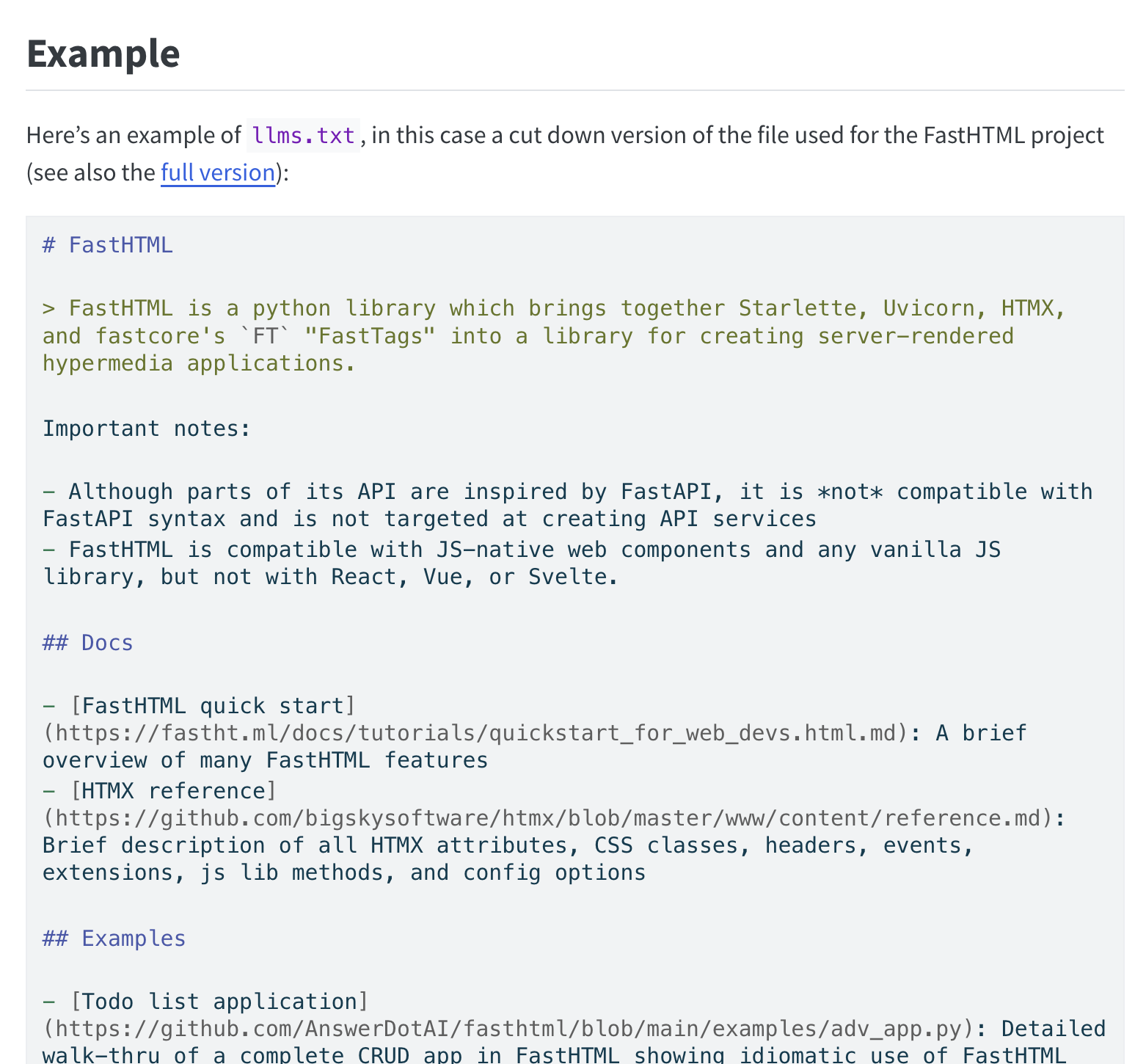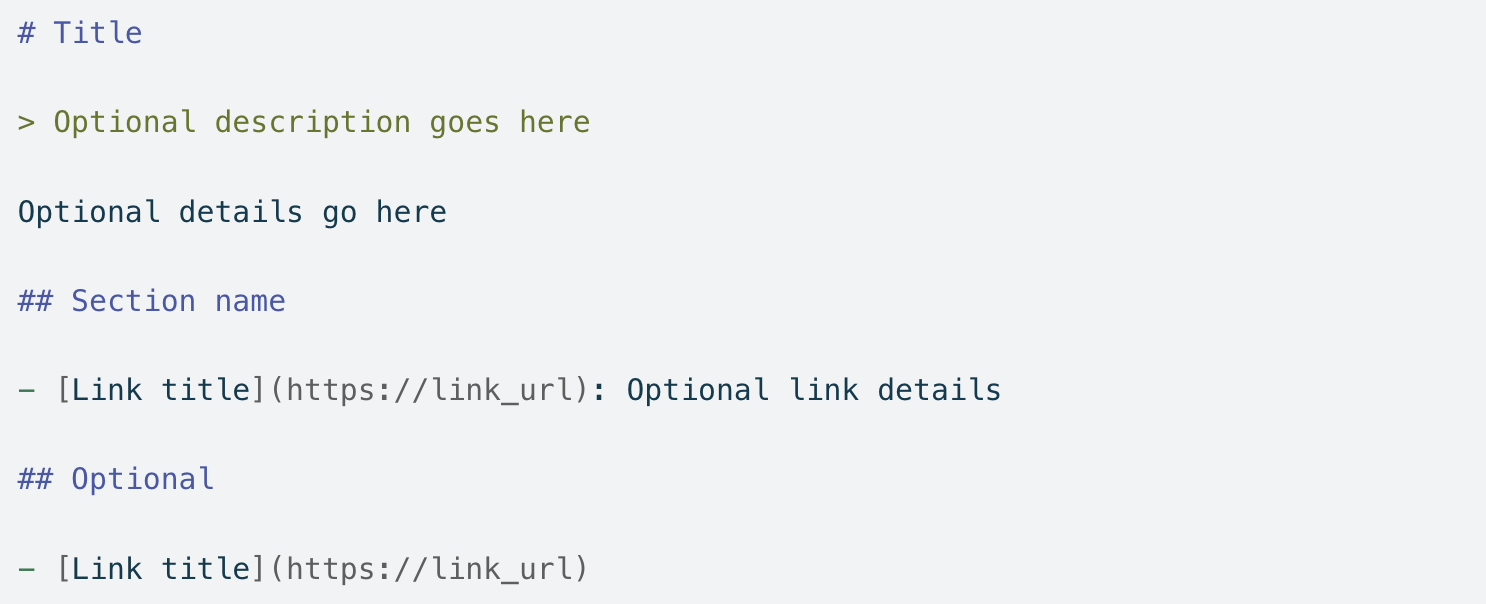



Everything is changing very fast, faster than a cat chasing a laser pointer, and now in 2025, it's waving a shiny thing llms.txt at us. Think of it as a cheat sheet that helps large language models (LLMs) like ChatGPT identify the valuable content on your website without getting distracted by the unnecessary information. So, if you want AI to understand your brand without any guesswork, embrace the llms.txt with open arms and maybe a cheeky grin. We’ll dive into the nuts and bolts of creating your own file, sprinkle in some tips on incorporating it into your SEO circus, and before you know it, you'll be the AI whisperer of your digital realm.

At its heart, llms.txt It is a standardised file format designed to curate web content specifically for consumption by AI models. Consider it a highly focused sitemap tailored to the needs of generative AI. The rise of these models has created a need for websites to explicitly guide AI in extracting the most meaningful and relevant information, while excluding elements like ads, sidebars, or repetitive navigation menus. By providing LLMs with this structured data, llms.txt it enhances the accuracy and efficiency of content retrieval, leading to more effective AI-powered search results. SEO experts are increasingly recognising the potential llms.txt to improve page rankings on AI-driven search platforms.
Some innovative businesses are already leveraging llms.txt. For instance, a SaaS company noticed that AI models were struggling to accurately summarise their complex product features. By implementing llms.txt, they were able to guide the AI to focus on key selling points and customer benefits, which dramatically improved the quality of AI-generated summaries and ultimately boosted lead generation.
The journey of web content standards began with robots.txt, a file designed to guide search engine crawlers on which parts of a website to avoid indexing. While effective for its initial purpose, robots.txt lacks the nuance required for today's AI-powered tools. llms.txt represents a significant step forward, specifically designed to help AI agents understand and extract relevant information from web pages. Unlike robots.txt, which primarily focuses on exclusion, llms.txt focuses on inclusion and curation, providing a clear roadmap for AI to navigate the most important content.
The difference lies in the technological advancements driving these standards. robots.txt was built for traditional search engine crawlers, while llms.txt is tailored to the sophisticated algorithms of LLMs and AI agents. It addresses the limitations of traditional formats by providing structured data that AI can easily process. Industry experts believe this transition marks a turning point in AI search optimisation. Rather than simply preventing access to certain areas, websites can now actively guide AI to the content that best represents their brand and offerings. Think of it as upgrading from a simple map to a GPS navigation system that directs AI to the precise information it needs.
The core function of llms.txt lies in its ability to enhance AI-based search and content algorithms through the delivery of structured content. By providing AI models with a clear and concise roadmap, llms.txt significantly improves search accuracy and speed. Instead of sifting through an entire webpage, AI can quickly retrieve the data it needs to effectively answer user queries. Digital marketers are increasingly adopting llms.txt to align their content with AI analytics methodologies, recognising the potential for improved content categorisation and user intent alignment, which results in a more seamless user experience.
For example, AI platforms increasingly favor content that includes both articles and YouTube videos, with shorter articles containing embedded videos often being prioritized. By using llms.txt to highlight these elements, businesses can ensure their content is more readily discovered and cited by AI. In fact, articles cited by AI often contain lists and are heavily formatted with bullet points, providing direct answers to conversational queries. A well-structured llms.txt file ensures that these elements are easily identified and understood by AI, leading to better search results and increased visibility.
Delving into the technical components, llms.txt relies on a simple yet effective syntax. It's essentially a text file containing directives that guide LLMs. The file structure typically includes sections for identifying the main content, important metadata, and relevant content hierarchies. Formatting conventions prioritize clarity and conciseness, making it easy for AI to parse the information. Implementing llms.txt involves uploading the file to the root directory of your server, making it accessible to AI crawlers. When generating the file, it's crucial to follow established guidelines to ensure accuracy and effectiveness.
Security is also a key consideration. While llms.txt is designed to be accessed by AI, it's not intended for direct indexing by traditional search engines. For this reason, it's recommended to use a noindex header with your llms.txt file to prevent unintended indexing. As John Mueller from Google suggests, using a noindex header could prevent it from being indexed unexpectedly. Several tools and platforms are emerging to assist technical SEO practitioners in creating and managing llms.txt files, streamlining the process and ensuring compliance with best practices.
Creating an effective llms.txt file requires careful planning and execution. The process begins with assessing your content structure and identifying the most relevant sections for inclusion. Clarity and organisation are paramount. A well-structured file should be easy for both humans and AI to understand. It is crucial to remember that this is not a one-time task; it's an ongoing process that requires periodic review and updates to align with evolving content and SEO trends.
Consider this analogy: imagine you're creating a tour guide for a museum. You wouldn't include every single exhibit, but rather highlight the most important and relevant pieces, providing context and background information. The same principle applies to llms.txt. You want to guide AI to the core content that best represents your website and aligns with user intent.
The first step is to evaluate your existing content architecture. Determine which parts of your website are most relevant for inclusion in your llms.txt file. Focus on content that directly addresses user needs, provides valuable information, and aligns with your overall SEO goals. Use analytics tools to identify frequently accessed or queried content sections. Prioritise these areas in your llms.txt file to ensure that AI models can easily find and retrieve the most important information.
A checklist can be helpful in this process. Ask yourself: Does this content address a common user question? Is it frequently shared or cited? Does it align with my core business offerings? By answering these questions, you can effectively assess the importance and relevance of your content.
Once you've assessed your content, the next step is to draft the basic structure of your llms.txt file. This involves creating a template that includes essential sections and syntactical elements. The basic format might look something like this:
# llms.txt
# Version: 1.0
Main Content Include: /path/to/main/article Include: /path/to/another/important/page
Metadata Metadata: description - This is a brief description of the website Metadata: keywords - SEO, AI, llms.txt
Exclude (Optional) Exclude: /path/to/ads Exclude: /path/to/irrelevant/content
This template provides a starting point for structuring your llms.txt file. Tailor it to your specific needs, ensuring that it accurately reflects the content and hierarchy of your website.
Language models thrive on structured, descriptive data. Include key types of information that are most beneficial to them, such as metadata, content hierarchies, and user intent signals. Strategically organise and present this information to ensure maximum utility and retrieval ease. Use rich, descriptive language that highlights the key takeaways and benefits of your content.
Aligning the presentation of key information with user query formats can be highly effective. For example, if users frequently ask "How do I do X?", ensure that your llms.txt file clearly identifies the section of your content that answers this question. This will help language models quickly retrieve the relevant information and provide users with accurate and helpful responses.
Clarity and readability are crucial for effective AI interpretation. Use whitespace, indentation, and comments to clarify complex sections. Consistent formatting and clear delineation between different sections prevent errors in machine parsing. Think of it as writing code: the more readable and well-structured the code, the easier it is for the computer to understand and execute it.
Tools are available to test the readability and clarity of your llms.txt file before deployment. These tools can help identify potential issues and ensure that your file is easily parsed by AI models. By prioritising clarity and readability, you can significantly improve the effectiveness of your llms.txt file.
Version control is essential for managing changes to your llms.txt file over time. As your content evolves and SEO requirements shift, you'll need to update your file accordingly. Use a version control system to track changes, making it easy to revert to previous versions if necessary. Schedule periodic audits of your llms.txt file to ensure alignment with new AI search developments and web content updates.
Maintaining a change log can be invaluable. Document every update, noting the date, the changes made, and the reasons for those changes. This will provide a clear record of the evolution of your llms.txt file and help you understand its impact on your SEO performance.
Optimising llms.txt for SEO involves more than just creating a file; it requires a strategic approach that considers the nuances of AI search and content retrieval. Smart structuring and content prioritisation are key to ensuring that AI can quickly access and index the most relevant information. By incorporating rich, well-prioritised data, you can capitalise on AI's structured data processing capabilities and improve your SERP performance. Moreover, continuous improvement and testing, based on AI behaviour analysis and search response results, can lead to substantial SEO gains.
Structured data plays a crucial role in making web content more accessible and readable by AI-powered tools. These tools can easily decipher structured content, resulting in increased search accuracy. Several structured data formats can be incorporated into your llms.txt, improving AI and improving your SEO. Think of structured data as a universal language that allows AI to quickly understand the meaning and context of your content.
Schema markup provides additional context and information about your content, further enhancing AI interpretation. While llms.txt primarily guides AI to the most important sections of your content, schema markup provides detailed information about the content itself. Certain types of schema markup are particularly pertinent for AI utilities, such as product descriptions, breadcrumbs, and FAQs.
For example, using schema markup to identify the key features of a product can significantly improve its visibility in AI-driven search results. Similarly, using schema markup to structure your FAQs can help AI quickly answer user questions and provide relevant information. By incorporating schema markup into your llms.txt file, you can future-proof your content against evolving AI methodologies.
Clarity and simplicity are paramount when structuring content for effective AI optimisation. Use clear, concise language and avoid jargon or complex sentence structures. Break down your content into easily digestible sections and subsections, making it easy for AI to understand the key takeaways. A well-structured llms.txt file should be like a well-written summary, providing the essential information without unnecessary fluff.
The key is to find the right balance between providing detailed information and maintaining usability for AI models. Avoid sacrificing informational depth for the sake of simplicity. Instead, focus on presenting your content in a clear, organised manner that is easy for both humans and AI to understand. By prioritising clarity and simplicity, you can significantly improve the effectiveness of your llms.txt file.
llms.txt shouldn't be viewed in isolation; it's a vital component of an integrated SEO strategy in today's digital landscape. It complements other SEO tools and strategies like keyword optimisation, metadata enrichment, and user experience enhancements. Aligning llms.txt creation and maintenance with SEO goals, metrics tracking, and AI adoption levels ensures a cohesive and effective approach. Moreover, various third-party tools and platforms facilitate the integration of llms.txt into wider SEO regimes, offering strategic insights on alignment.
Ensuring that your llms.txt content aligns with user intent queries and AI search methodologies is essential for maximizing its effectiveness. Develop a checklist or framework for aligning content within llms.txt with typical user intents and AI search paradigms. Understand both explicit and implicit search factors that AI uses to determine content relevancy. Consider a scenario where a user searches for "best Italian restaurants near me." Your llms.txt file should clearly identify the section of your website that lists local Italian restaurants, providing key information such as address, hours, and customer reviews. By aligning your content with user intent, you can significantly improve its visibility in AI-driven search results.
Digital marketers and web developers often encounter challenges when implementing llms.txt. These can range from syntax errors to content misalignment or incorrect data prioritization. Syntax errors can be easily avoided by carefully following the established guidelines and using validation tools to check your file. Content misalignment can be addressed by thoroughly assessing your content structure and identifying the most relevant sections for inclusion. Incorrect data prioritisation can be remedied by analysing user search patterns and prioritising content that aligns with user intent.
One common challenge is ensuring that your llms.txt file accurately reflects the changes you make to your website. As your content evolves, it's important to update your file accordingly. Implementing version control and scheduling periodic audits can help ensure that your llms.txt file remains accurate and effective. Overcoming these challenges is crucial for realizing the full potential of llms.txt and improving your SEO performance.
Several misconceptions surround llms.txt and its differentiation from robots.txt. It's important to clarify these misunderstandings using authoritative sources. While robots.txt prevents search engine indexing of specific segments of your website, llms.txt guides AI towards the most important content for positive AI indexing. llms.txt is not designed to block access to certain areas of your website, but rather to curate and highlight the content that you want AI to focus on.
A key difference lies in their functionality. robots.txt instructs search engine crawlers on what not to crawl, while llms.txt instructs AI models on what to prioritise. One is about exclusion, while the other is about inclusion and guidance. This distinction is crucial for understanding the role of llms.txt in the modern SEO landscape. Essentially, think of robots.txt as a "do not enter" sign, and llms.txt as a "preferred route" map for AI.

We value your privacy
We use cookies to enhance your browsing experience, serve content, and analyse our traffic. By clicking "Accept All," you consent to our use of cookies. Cookie Policy

